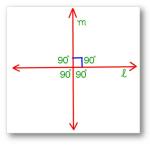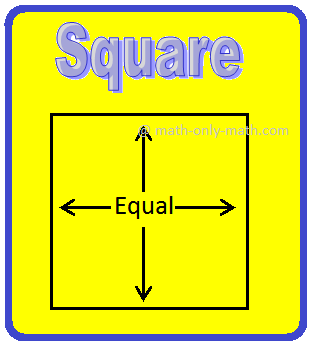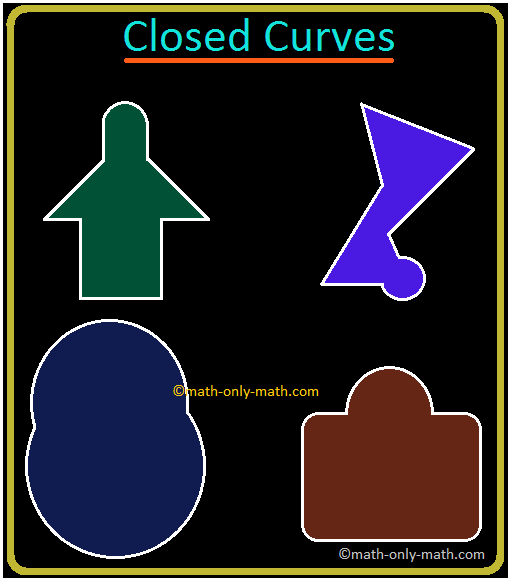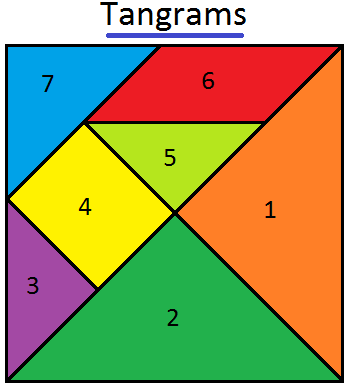Direct Variation
Direct Variation or Direct Proportion:
Two quantities are said to vary directly if the increase (or decrease) in one quantity causes the increase (or decrease) in the other quantity.
Examples on Direct Variation or Direct Proportion:
(i) The cost of articles varies directly as the number of articles. (More articles, more cost)
(ii) The distance covered by a moving object varies directly as its speed. (More speed, more distance covered in the same time)
(iii) The work done varies directly as the number of men at work. (More men at work, more is the work done in the same time)
(iv) The work done varies directly as the working time. (More is the working time, more is the work done)
Solved worked-out problems on Direct Variation:
1. If $ 166.50 is the cost of 9 kg of sugar, how much sugar can be purchased for $ 259?
Solution:
For $ 166.50, sugar purchased = 9 kg
For $ 1, sugar purchased = 9/166.50 kg [less money, less sugar]
For $ 259, sugar purchased = {(9/166.50) × 259} kg
[More money, more sugar]
= 14 kg.
Hence, 14 kg of sugar can be purchased for $ 259.
2. If one score oranges cost $ 45, how many oranges can be bought for $ 72?
Solution:
For $ 45, number of oranges bought = 20
For $ 1, number of oranges bought = 20/45 [less money, less oranges]
For $ 72, number of oranges bought = {(20/45) × 72}
[More money, more oranges]
= 32.
Hence, the number of oranges bought for $ 72 is 32.
3. If a car covers 82.5 km in 5.5 litres of petrol, how much distance will it cover in 13.2 litres of petrol?
Solution:
In 5.5 litres of petrol, distance covered = 82.5 km
In 1 litre of petrol, distance covered = 82.5/5.5 km
[less petrol, less distance]
In 13.2 litres of petrol, distance covered = {(82.5/5.5) × 13.2} km
[More petrol, more distance]
= 198 km.
Hence, the car covers 198 km in 13.2 litres of petrol.
More examples on Direct Variation word problems:
4. If 5 men or 7 women can earn $ 875 per day, how much would 10 men and 5 women earn per day?
Solution:
5 men = 7 women
⇒ 1 man = 7/5 women
⇒ 10 men = (7/5 × 10) women = 14 women
⇒ (10 men + 5 women) ≡ (14 women + 5 women) = 19 women.
Daily earning of 7 women = $ 875
Daily earning of 1 woman = $ (875/7) [less women, less earning]
Daily earning of 19 women = $ (875/7 × 19)
[More women, more earning]
= $ 2375
Hence, 10 men and 5 women earn $ 2375 per day.
5. If 3 men or 4 women earn $ 480 in a day, find how much will 7 men and 11 women earn in a day?
Solution:
One day earning of 3 men = $ 480
One day earning of 1 man = $ (480/3) [less men, less earning]
One day earning of 7 men = $ (480/3 × 7) [more men, more earning]
= $ 1120
One day earning of 4 women = $ 480
One day earning of 1 woman = $ (480/4) [less women, less earning]
One day earning of 11 women = $ (480/4 x 11)
[More women, more earning]
= $ 1320
One day earning of 7 men and 11 women = $ (1120 + 1320) = $ 2440.
6. The cost of 16 packets of salt, each weighing 900 grams is $ 84. What will be the cost of 27 packets of salt, each weighing 1 kg?
Solution:
Cost of 16 packets, each weighing 9/10 kg = $ 84
Cost of 16 packets, each weighing 1 kg = $ (84 × 10/9)
[more weight per packet, more cost]
Cost of 1 packet, each weighing 1 kg = $ (84 × 10/9 × 1/16)
[less packets, less cost]
Cost of 27 packets, each weighing 1 kg = $ (84 × 10/9 × 1/16 × 27)
= $ (315/2)
= $ 157.50
[more packets, more cost]
Hence, the cost of 27 packets, each weighing 1 kg is $ 157.50.
7. If the wages of 15 workers for 6 days are $ 9450, find the wages of 19 workers for 5 days.
Solution:
Wages of 15 workers for 6 days = $ 9450
Wages of 1 worker for 6 days = $ (9450/15)
[less workers, less wages]
Wages of 1 worker for 1 day = $ (9450/15 × 1/6)
[less days, less wages]
Wages of 19 workers for 1 day = $ (9450 × 1/6 × 19)
[more workers, more wages]
Wages of 19 workers for 5 day = $ (9450 × 1/6 × 19 × 5)
[more workers, more wages]
= $ 9975
Hence, the wages of 19 workers for 5 days = $ 9975.
Direct Variation
● Ratio and Proportion (Direct & Inverse Variation)
Practice Test on Direct Variation and Inverse Variation
● Ratio and Proportion - Worksheets
Worksheet on Inverse Variation
8th Grade Math Practice
From Direct Variation to HOME PAGE
Didn't find what you were looking for? Or want to know more information about Math Only Math. Use this Google Search to find what you need.
Recent Articles
-
Perpendicular Lines | What are Perpendicular Lines in Geometry?|Symbol
Apr 19, 24 03:31 PM
In perpendicular lines when two intersecting lines a and b are said to be perpendicular to each other if one of the angles formed by them is a right angle. In other words, Set Square Set Square If two… -
Fundamental Geometrical Concepts | Point | Line | Properties of Lines
Apr 19, 24 01:50 PM
The fundamental geometrical concepts depend on three basic concepts — point, line and plane. The terms cannot be precisely defined. However, the meanings of these terms are explained through examples. -
What is a Polygon? | Simple Closed Curve | Triangle | Quadrilateral
Apr 19, 24 01:22 PM
What is a polygon? A simple closed curve made of three or more line-segments is called a polygon. A polygon has at least three line-segments. -
Simple Closed Curves | Types of Closed Curves | Collection of Curves
Apr 18, 24 01:36 AM
In simple closed curves the shapes are closed by line-segments or by a curved line. Triangle, quadrilateral, circle, etc., are examples of closed curves. -
Tangrams Math | Traditional Chinese Geometrical Puzzle | Triangles
Apr 18, 24 12:31 AM
Tangram is a traditional Chinese geometrical puzzle with 7 pieces (1 parallelogram, 1 square and 5 triangles) that can be arranged to match any particular design. In the given figure, it consists of o…





